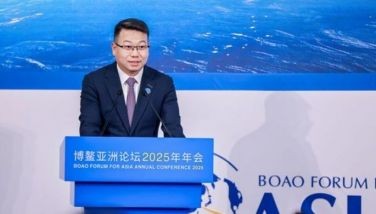Willfulness

Some of the reasons for the flooding in Bulacan and Pampanga are pretty banal. For instance, one gate at Bustos Dam has been in disrepair for three years now and no one bothered to fix it.
The other reasons require creative engineering solutions. But even the obvious engineering solutions will require the application of political will.
Look at the map. Central Luzon is really a floodplain. It is meant to flood. This is why traditional houses were built on stilts and why dried corn was always stored under the roof. It is the dictate of long memories of great floods.
Somehow, we discarded long memories. People settled in congested towns. Subdivisions were built over catch basins. Streams were stolen. The commons was disrespected.
For over a century, we tried to overpower the floods. Last week, the floods overpowered us.
Short of tearing up the highways and dismantling large settlements to make way for water to flow out, the only thing that could be done is to build infrastructure for impounding the water that comes in great quantity during the wet months. The impounded water could then be used for irrigation during the dry months, shifting demand from the inadequate reservoirs.
Impounding the water makes absolute sense.
When President Marcos met with stakeholders in the flooded areas last week, it became clear why the construction of impounding infra was never done all these years: there will be strong resistance from communities that will be adversely affected by collecting the water.
The Candaba swamp communities are an example of this. One swamp resident, opposing the construction of an impounding facility, said 9,000 farmers will be dislocated. Over generations governed by a weak state, a lot of the swamp was actually titled as agricultural land.
Impounding water in the low-lying swamp is an obvious solution. But it will meet political resistance. If that engineering solution is to be done, President Marcos will have to act with some political will. Land claims will have to be settled and communities to be affected will have to be resettled. No agency beneath the Presidency could get this done. The matter is squarely on the President’s lap.
Fortunately, we are seeing some signs of resoluteness in our characteristically conflict-averse leader. A few days ago, he ordered the massive reclamation projects in Manila Bay suspended while the DENR conducts a saner environmental impact assessment.
The DENR, as we know, is currently led by a scientist who is not impressed by power-brokering – the traditional means by which large-scale projects with doubtful environmental credentials get done. If science tells her these projects carry long-term deleterious effects, she will not hesitate recommending they be scrapped.
Tactical
Beijing pulled a rabbit out of a hat. She now insists the Philippine government committed to remove the rusting hulk of the BRP Sierra Madre from Ayungin Shoal.
China now insists the grounding of the ancient craft was “illegal.” She now wants it removed, which opens the way for Chinese forces to occupy the strategic shoal.
No document could be produced showing the Philippines promised to remove the BRP Sierra Madre – which will likely remain grounded until rusting causes it to crumble. On the contrary, Manila now declares it will retain its outpost at Ayungin Shoal and will keep our Marines supplied whatever it takes.
Ayungin is well within our exclusive economic zone defined under the UN Convention on the Law of the Sea (UNCLOS). Our troop presence on the shoal is small and largely symbolic. But the BRP Sierra Madre, no matter its lack of seaworthiness, is an asset of the Philippine Navy. Should China move to extract it by force, this will activate the mutual defense provision of our treaty with the US.
The Chinese want Ayungin Shoal. They are trying, therefore, to make our Marine outpost there untenable by blocking resupply for our men. This is what that water cannon incident last week is all about.
This incident is not an accidental one. A small fleet of China Coast Guard vessels, assisted by “militia” ships disguised as fishing vessels, were lying in wait for the resupply convoy. When the convoy materialized, the Chinese ships maneuvered to throw them off course and bombarded the resupply vessels with water.
This will be the standard Chinese tactic from hereon. They will try to disrupt every resupply mission, hoping that we eventually throw up our arms and decide it is too costly to maintain that small detachment on Ayungin.
China has initiated a severe test of wills. They will continue to cram the waters they claim with Coast Guard and “militia” vessels. All these prowling vessels will try to intercept every Filipino vessel that moves into what they claim is their territory.
This game will affect not only the efficiency by which we are able to resupply our troops. It will make things more difficult for our civilian fishing vessels to operate in what has been our traditional fishing ground.
Instead of showing weakness, as the Chinese hoped, Manila scaled up on the toughness scale. We will not pull out the Sierra Madre. We will not abandon our outpost. We will organize better equipped convoys. This, too, will be a test of President Marcos’ resoluteness.
The situation can only escalate so much. The dangerous maneuvers undertaken by the Chinese ships attempting to block our craft will sooner or later produce even more serious incidents. The dangerous blocking maneuvers could produce an accident that could quickly ramp up tensions.
- Latest
- Trending






















